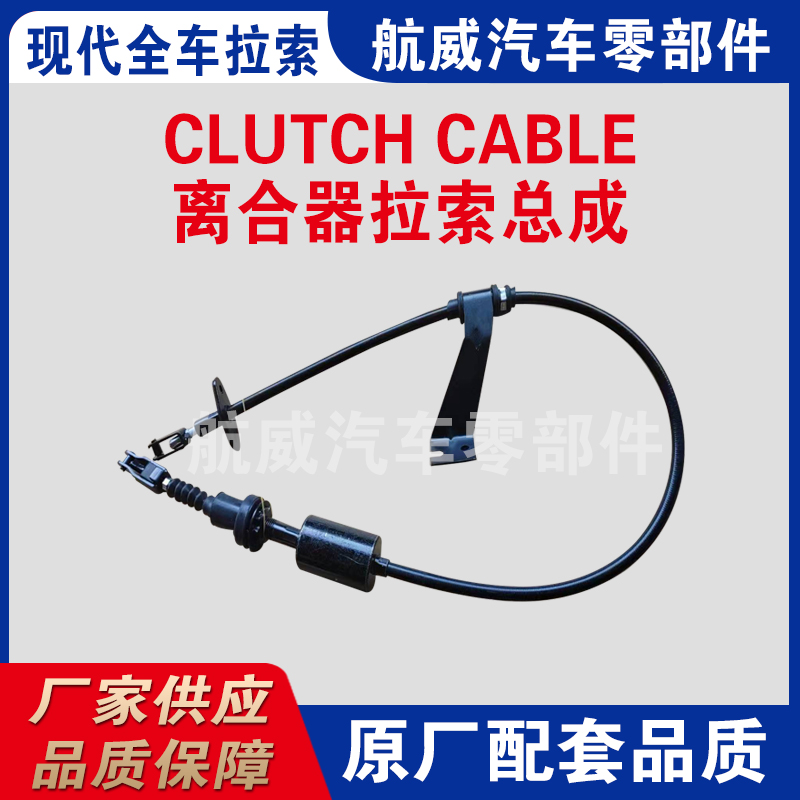carburetor throttle cable
Understanding the Carburetor Throttle Cable A Key Component of Engine Performance
The carburetor throttle cable is an often-overlooked component in the world of automotive engineering, yet it plays a crucial role in the performance and efficiency of an internal combustion engine. This cable connects the throttle pedal in the vehicle’s cabin to the carburetor, regulating the amount of air and fuel mixture flowing into the engine. Understanding how this simple yet vital component works can provide insights into the maintenance and performance tuning of vehicles, particularly older models that still utilize carburetors instead of modern fuel injection systems.
The Role of the Throttle Cable
The primary function of the throttle cable is to control the engine's power output by adjusting the throttle plate's position in the carburetor. When the driver presses down on the accelerator pedal, the cable pulls on the throttle linkage, opening the throttle plate and allowing more air and fuel to enter the combustion chamber. This process increases the engine's power output, enabling the vehicle to accelerate. Conversely, when the pedal is released, the throttle cable retracts, closing the throttle plate, which reduces the airflow and fuel mixture, ultimately slowing the vehicle down.
Components of the Throttle Cable System
A typical throttle cable assembly consists of a cable housing and an inner wire. The cable housing is generally anchored at one end to the vehicle's body and attached to the carburetor at the other. The inner wire runs through this housing; when the accelerator pedal is depressed, the tension on the inner wire increases, pulling on the carburetor's throttle linkage. Over time, these cables can experience wear and tear, leading to issues such as sluggish throttle response, increased friction, or even complete failure.
Common Issues and Maintenance
carburetor throttle cable

Proper maintenance of the throttle cable is essential for optimal engine performance. Common problems that may arise include fraying of the cable, stiffness due to lack of lubrication, and incorrect adjustments, which can result in poor throttle response or unintended acceleration. Regular inspections should be part of standard vehicle maintenance practices, with particular attention paid to the cable’s overall condition, alignment, and smooth operation.
One effective maintenance practice is to periodically lubricate the throttle cable to minimize friction. This helps ensure that the cable operates smoothly, providing the driver with a more responsive acceleration. If any signs of wear are observed, such as fraying or cracking of the cable, it is crucial to replace it promptly to prevent more severe implications, such as complete throttle failure.
The Evolution of Throttle Systems
While carburetor systems and throttle cables were standard in older vehicles, modern automobiles have largely transitioned to electronic throttle control systems (ETC). These systems utilize sensors and electronic actuators to manage throttle position without the need for a physical cable. While this advancement improves fuel efficiency and response time, it is important to recognize the historical significance and continued relevance of traditional throttle cable systems in many vehicles, especially in classic cars and some performance applications.
Conclusion
The carburetor throttle cable may seem humble in comparison to more complex automotive components, yet its importance cannot be understated. Its function directly impacts engine performance and drivability. Whether for routine maintenance or performance upgrades, understanding this essential link between the driver and the engine is critical. As automotive technology continues to evolve, the throttle cable serves as a reminder of the mechanical simplicity that characterizes earlier engine designs, offering a unique charm and character cherished by enthusiasts worldwide.
-
Workings of Clutch Pipe and Hose SystemsNewsJun.04,2025
-
The Inner Workings of Hand Brake Cable SystemsNewsJun.04,2025
-
The Secrets of Throttle and Accelerator CablesNewsJun.04,2025
-
The Hidden Lifeline of Your Transmission Gear Shift CablesNewsJun.04,2025
-
Demystifying Gear Cables and Shift LinkagesNewsJun.04,2025
-
Decoding Clutch Line Systems A Comprehensive GuideNewsJun.04,2025
